Microsoft Teams has evolved far beyond a simple video conferencing platform to become a comprehensive workplace collaboration hub. With its extensive collection of productivity apps, Teams empowers organizations to streamline workflows and boost efficiency all in one centralized location.
These integrated productivity apps transform Teams into a powerhouse of functionality, offering everything from project management tools to document collaboration features. Whether it’s coordinating tasks with Planner, analyzing data through Power BI, or automating workflows with Power Automate, Teams’ app ecosystem provides solutions for virtually every business need. Organizations can even customize their Teams experience by choosing from hundreds of third-party apps available in the Microsoft Teams store.
What Are Microsoft Teams Productivity Apps
Microsoft Teams productivity apps integrate workplace tools that extend functionality within the Teams platform. These apps enhance communication streamline workflows seamlessly connect data.
Core Microsoft 365 Apps
- Microsoft Word enables real-time document collaboration editing directly in Teams
- Microsoft Excel facilitates spreadsheet sharing analysis across team channels
- Microsoft PowerPoint supports presentation creation delivery during Teams meetings
- Microsoft OneNote provides shared digital notebooks for team documentation
Built-in Teams Apps
- Tasks by Planner organizes project timelines assignments milestones
- Forms creates surveys polls questionnaires for team feedback
- Lists manages structured information tracking inventory projects contacts
- Whiteboard enables virtual brainstorming collaborative diagramming
Power Platform Integration
- Power BI visualizes business data through interactive dashboards reports
- Power Automate creates automated workflows between Teams other applications
- Power Apps builds custom applications without extensive coding
| App Category | Number of Apps | Key Features |
|---|---|---|
| Core M365 | 8 | Document editing collaboration |
| Built-in | 15 | Project management communication |
| Power Platform | 3 | Analytics automation customization |
| Third-party | 1,000+ | Industry-specific solutions |
- Trello adds Kanban-style project boards directly in Teams channels
- Zoom enables meeting scheduling participation within Teams interface
- Adobe Creative Cloud integrates design file sharing viewing capabilities
- ServiceNow connects IT service management workflows to Teams conversations
Essential Microsoft Teams Apps for Task Management

Microsoft Teams integrates task management applications that streamline workflow organization projects across teams. These apps enhance productivity through centralized task tracking collaboration features.
Planner and To Do Integration
Microsoft Planner syncs tasks directly within Teams channels creating visual task boards with drag-drop functionality. Team members track assignments through categorized buckets organize work by priority labels add due dates to deliverables. Microsoft To Do integration enables personal task management connecting individual assignments from Planner to private to-do lists.
Key Planner features include:
- Visual Kanban boards for tracking task progress
- Customizable labels for priority status
- File attachment capabilities for task documentation
- Automated task notifications within Teams
- Progress charts showing team completion rates
Project Management Apps
Project management apps in Teams provide comprehensive tools for tracking complex initiatives managing resources monitoring timelines.
- Monday.com: Visual project tracking Gantt charts resource allocation
- Asana: Timeline views subtask management workload balancing
- Trello: Board-based project organization custom workflows checklists
- Wrike: Time tracking project templates workflow automation
- ClickUp: Document collaboration task dependencies sprint planning
| App Feature | Collaboration Capability | Integration Level |
|---|---|---|
| Planner | Team Task Boards | Native Microsoft |
| Monday.com | Visual Project Tracking | Full Teams Integration |
| Asana | Timeline Management | Deep Integration |
| Trello | Kanban Boards | Direct Integration |
| Wrike | Resource Management | Complete Integration |
Communication and Collaboration Tools
Microsoft Teams enhances workplace communication through integrated apps that streamline collaboration across organizations. These tools create a unified platform for meetings, document sharing, and real-time teamwork.
Meeting Apps and Extensions
Meeting apps in Microsoft Teams transform virtual gatherings into interactive sessions with enhanced functionality. Popular meeting extensions include:
- Polly creates instant polls during meetings to gather real-time feedback
- Kahoot! adds gamification elements for engaging training sessions
- Notes enables collaborative note-taking with automatic meeting participant tagging
- Mindmeister facilitates collaborative mind mapping during brainstorming sessions
- MURAL provides digital whiteboarding capabilities for visual collaboration
Document Collaboration Apps
Document collaboration apps enable teams to work simultaneously on files within the Teams environment:
- Microsoft Office apps (Word, Excel, PowerPoint) support real-time co-authoring
- SharePoint integrates document libraries with version control features
- Adobe Acrobat allows PDF viewing, editing, and e-signatures without leaving Teams
- Box provides secure cloud storage with advanced file permissions
- Dropbox enables file sharing with external stakeholders through Teams channels
| Feature | Benefit |
|---|---|
| Auto-save | Prevents data loss during collaboration |
| Version history | Tracks document changes by user |
| Comment threading | Facilitates focused discussions |
| Access controls | Maintains document security |
Automation and Workflow Apps
Microsoft Teams integrates automation capabilities that streamline repetitive tasks and create efficient workflows across organizations. These tools reduce manual processes and enhance team productivity through automated sequences and customizable actions.
Power Automate Integration
Power Automate connects Microsoft Teams with 400+ applications to create automated workflows without coding. Users build custom flows that trigger specific actions based on Teams events such as:
- Message reactions that automatically create tasks in Planner
- Channel post notifications that update SharePoint lists
- Meeting recordings that auto-upload to Stream
- Calendar events that generate automated team reminders
- File uploads that initiate approval processes
The platform offers pre-built templates for common automation scenarios:
| Automation Template | Function |
|---|---|
| Adaptive Card Responses | Collects structured data from team conversations |
| Approval Workflows | Routes documents for sequential team review |
| Task Creation | Generates assignments from flagged messages |
| Channel Notifications | Alerts teams about external system updates |
| Meeting Summaries | Distributes automated recap notes to attendees |
Third-Party Workflow Solutions
Teams marketplace features specialized automation apps that extend workflow capabilities:
- Zapier: Connects Teams with 3,000+ external applications
- Workato: Enables complex enterprise automation sequences
- Automate.io: Creates multi-step workflow chains
- IFTTT: Triggers actions based on conditional statements
- Nintex: Designs visual process workflows
These solutions provide industry-specific automations:
| Industry | Automation Examples |
|---|---|
| Healthcare | Patient appointment scheduling alerts |
| Finance | Invoice processing notifications |
| Education | Assignment submission tracking |
| Sales | Lead management updates |
| IT | Incident response coordination |
The apps integrate directly with Teams channels enabling automated notifications background processes data synchronization.
Analytics and Reporting Apps
Microsoft Teams analytics and reporting apps transform raw data into actionable insights for informed decision-making. Power BI integration enables teams to create interactive dashboards directly within channels, featuring real-time data visualization through charts, graphs, and custom reports.
Essential Analytics Apps
- Databox: Combines metrics from 70+ data sources into unified Teams dashboards
- Zoho Analytics: Creates cross-functional reports with drag-and-drop interfaces
- Tableau: Generates advanced visualizations with drill-down capabilities
- InsightSquared: Delivers sales analytics with AI-powered forecasting
- Smartsheet: Tracks project metrics through customizable report templates
Performance Monitoring Tools
Advanced monitoring applications enhance Teams performance tracking:
| Tool Name | Key Features | Data Points Tracked |
|---|---|---|
| Teams Admin Center | Usage statistics, call quality | 15+ metrics |
| Call Quality Dashboard | Network performance, audio/video quality | 20+ parameters |
| User Activity Reports | Adoption rates, engagement levels | 10+ indicators |
Custom Reporting Solutions
Power Platform integration enables specialized reporting capabilities:
- Power BI Reports: Embeds interactive data visualizations in channels
- Power Automate Alerts: Triggers notifications based on data thresholds
- Power Apps Dashboards: Creates custom analytics interfaces
- SharePoint Lists: Generates automated status reports
- Microsoft Forms: Collects data for analytical processing
- SAP Analytics: Integrates ERP data visualization
- Oracle Analytics: Provides database reporting capabilities
- IBM Cognos: Delivers predictive analytics insights
- SAS Visual Analytics: Offers statistical analysis tools
- Qlik Sense: Creates self-service intelligence dashboards
Best Practices for Implementing Teams Apps
Planning and Assessment
Organizations maximize Teams app implementation through strategic planning and careful assessment. A comprehensive app audit identifies existing tools, eliminates redundancies and determines integration requirements. Creating an adoption roadmap with specific milestones ensures systematic rollout across departments.
Security and Compliance
Microsoft Teams app security requires multiple protective measures:
- Enable multi-factor authentication for all app access
- Configure data loss prevention policies for sensitive information
- Set up conditional access rules based on user roles
- Review third-party app permissions before deployment
- Monitor app usage patterns through security analytics
User Training and Support
Effective Teams app adoption relies on structured user education:
- Create role-specific training materials
- Schedule live demonstration sessions
- Establish a support channel for app-related queries
- Develop quick reference guides for common tasks
- Form a network of power users to assist colleagues
Performance Monitoring
Regular performance tracking ensures optimal app functionality:
| Metric | Monitoring Frequency | Key Indicators |
|---|---|---|
| App Usage | Weekly | Active users, session duration |
| Response Time | Daily | Load times, latency |
| Error Rates | Real-time | Failed operations, crashes |
| User Feedback | Monthly | Satisfaction scores, feature requests |
Integration Management
Seamless app integration requires systematic oversight:
- Document all app dependencies and connections
- Test integrations in a controlled environment
- Maintain updated API configurations
- Schedule regular compatibility checks
- Create backup procedures for critical integrations
- Define app ownership and maintenance responsibilities
- Create standardized approval processes for new apps
- Set data retention and archival guidelines
- Implement usage policies and compliance requirements
- Schedule regular policy reviews and updates
Microsoft Teams productivity apps have transformed workplace collaboration by offering a comprehensive ecosystem of integrated tools. Organizations that leverage these apps effectively can significantly enhance their operational efficiency and team productivity.
The platform’s strength lies in its versatility combining native Microsoft solutions third-party integrations and custom apps to meet specific business needs. With proper implementation planning security measures and user training organizations can create a robust digital workspace that drives innovation and success.
By embracing Microsoft Teams’ extensive app capabilities businesses can build a more connected collaborative and productive work environment that’s ready to meet the challenges of modern workplace demands.

